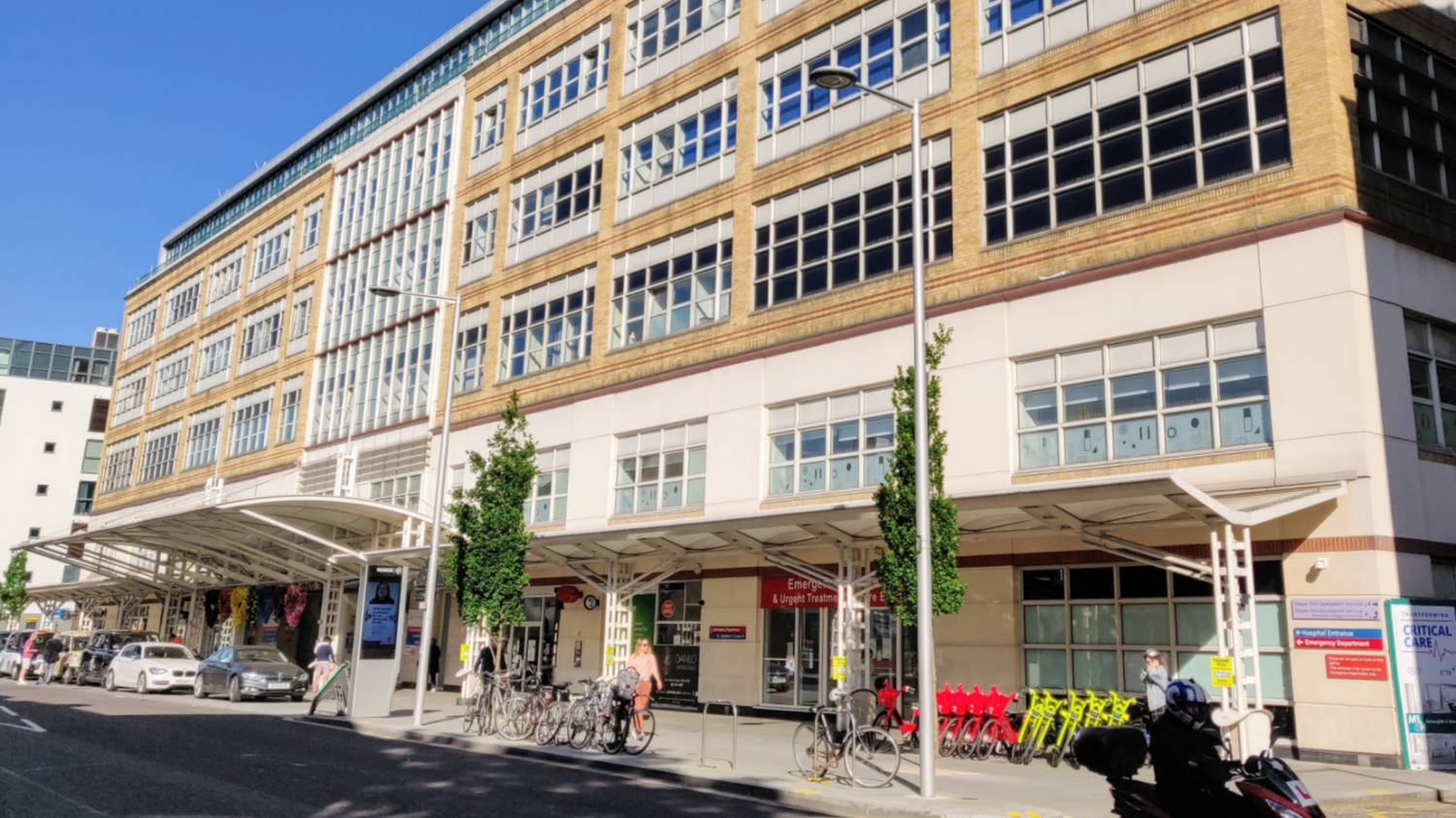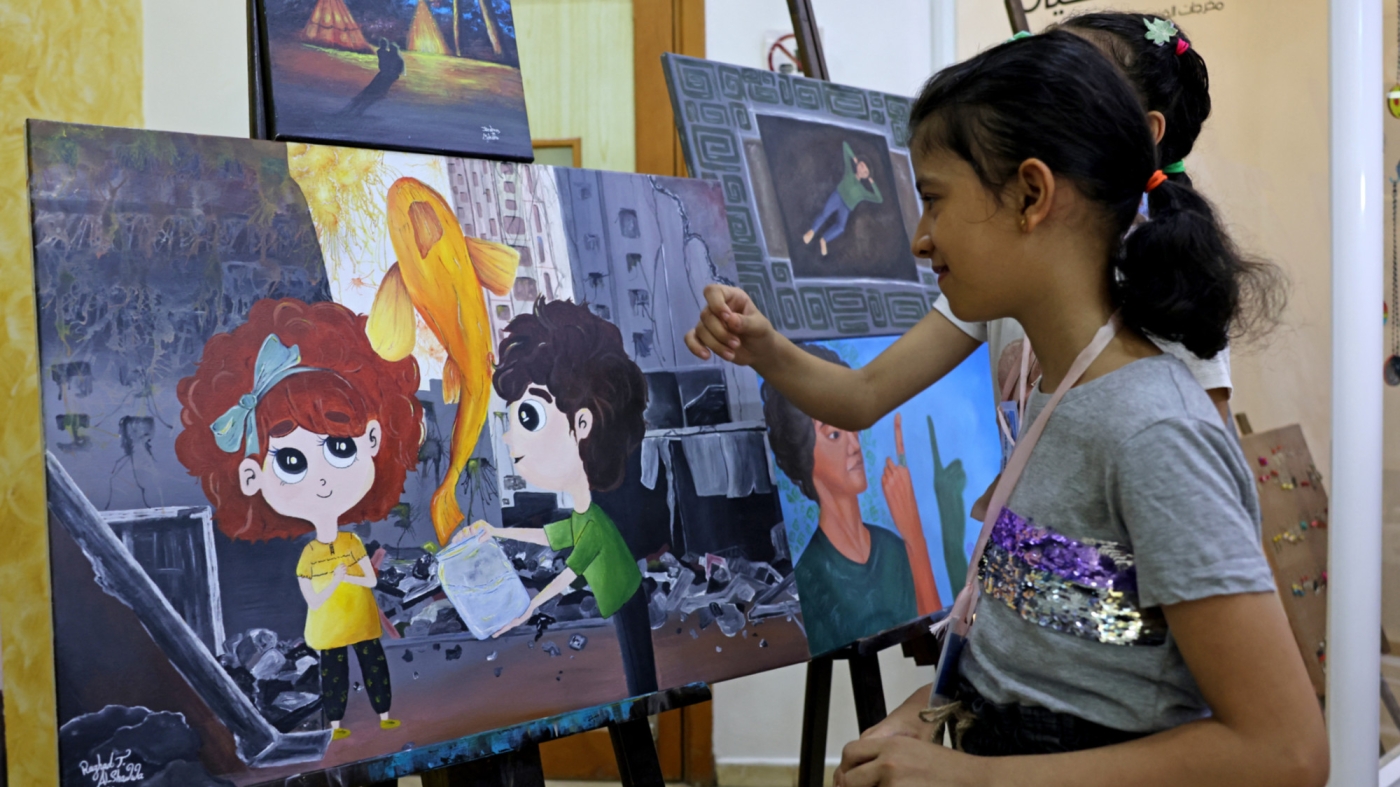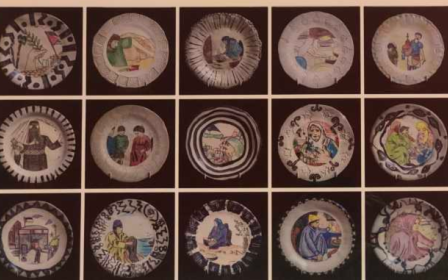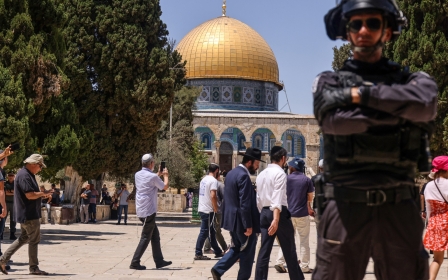London hospital removed Gaza children's artwork following legal threat

A London hospital was threatened with legal action by a British pro-Israel charity for displaying artwork depicting the daily life of Palestinian schoolchildren from Gaza, Middle East Eye can reveal.
Chelsea and Westminster Hospital removed the artwork "Crossing Borders - A Festival Of Plates", which was designed by Palestinian students and had been displayed next to the children’s outpatients department at the hospital since 2012.
The hospital is run by Chelsea & Westminster Hospital Foundation Trust. In a statement, the trust confirmed to MEE that "the artwork in question was removed following a letter to C&W HFT [Chelsea & Westminster Hospital Foundation Trust] suggesting legal action from the UKLFI [UK Lawyers for Israel]."
UKLFI's letter stated "that some patients had complained to them that some elements of the display caused them offence and made them feel victimised," the trust said in a statement to MEE. C&W HFT declined to comment on when they received the letter and when the artwork was removed.
New MEE newsletter: Jerusalem Dispatch
Sign up to get the latest insights and analysis on Israel-Palestine, alongside Turkey Unpacked and other MEE newsletters
The trust also declined to say whether the hospital had itself received direct complaints other than those made by UKLFI. "We reviewed our duties under the Equalities Act 2010 and took the decision to remove the display which was created in 2012," the trust said.
"We are sorry that the removal of this artwork has offended some communities and that its contents offended other communities. We will be working with the relevant parties on the next steps for the artwork."
The trust said that Chelsea Community Hospital School (CCHS), a purpose-built school linked to the hospital trust, "has long-standing and positive links with schools including in the Palestinian Territories".
MEE understands that children with special needs from the hospital school had transferred the art designed by Palestinian students in Gaza onto plates. When asked, the trust did not comment.
CCHS provides education for children aged 4-18 who cannot attend school because they are receiving medical treatment or have mental health needs.
The curriculum includes science and art: some children at the CCHS spend up to six months a year receiving medical treatment while away from their families and homes.
In 2010, the CCHS received the British Council's prestigious International School Award for partnering with schools in Finland, Poland, Italy, Greece and Palestinian schools in Gaza, where two million people have been living under an Israeli blockade for 16 years.
In addition, the CCHS ran workshops in four Palestinian schools in Gaza operated by the UN Relief and Works Agency for Palestine Refugees (UNRWA) during 2012.
'Crossing Borders'
Children make up almost 47 percent of Gaza's population, and some of have endured multiple Israeli bombing campaigns since 2007. A recent study showed that nine out of 10 children in Gaza suffer from PTSD, depression and suicidal thoughts.
In 2012, Palestinian students from UNRWA Beit Lahiya Preparatory Girls’ School and Jabalia Preparatory Boys School sent their pictures to London with two of their teachers.
Later, the art plates and the Palestinian pictures formed part of the Nour Festival held in Kensington and Chelsea royal borough that celebrates culture from the Middle East and North Africa.
They depict Palestinians carrying a water jar, baking, catching fish with a net, and harvesting olives. Three of the 21 plates show the Palestinian flag, with one atop what appears to be an Israeli military watchtower. Another, which is only partially visible, flies from the Dome of the Rock mosque in occupied East Jerusalem.
Caroline Turner, the director of UKLFI, said on 14 February: “We are pleased that the display has been removed and that the hospital has responded positively to its patients’ complaints.”
The group submitted a complaint to the hospital, it said, "on behalf of some Jewish patients, who said that they felt vulnerable and victimised by this display".
UKLFI said that the Palestinian flag atop the Dome of the Rock hinted that "Jerusalem and in particular the site of what had been the Jewish Temple, would be part of a Palestinian state. "The Temple Mount is the holiest place in Judaism and it is offensive for Jewish people to see a Palestinian flag over their holiest site," it added.
Hussam Zomlot, ambassador of Palestine to the UK, expressed his dismay and asked Chelsea and Westminster hospital to reinstall the artwork.
"We are deeply disappointed that you, as healthcare providers, have caved into this racist and discriminatory bullying that completely ignores the realities on the ground as well as international law," Zomlot said.
He added that the Al-Aqsa compound, which includes the Dome of the Rock, "is located in East Jerusalem, an occupied Palestinian area and the future capital of the state of Palestine as per international resolution."
Israel occupied East Jerusalem, the West Bank and the Gaza in 1967, in a move never recognised by the international community. Palestinians remain adamant about calling the city their capital.
Some Israeli groups have openly called for the destruction of the Dome of the Rock to build a Jewish temple on the site. At the same time, members of the current far-right government have encouraged Israelis to pray at the site despite a Jewish religious prohibition.
Middle East Eye delivers independent and unrivalled coverage and analysis of the Middle East, North Africa and beyond. To learn more about republishing this content and the associated fees, please fill out this form. More about MEE can be found here.






